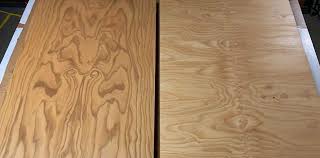When it comes to choosing plywood for your home or office, the decision often boils down to two options: waterproof plywood and ordinary plywood. At first glance, both may look similar, but their performance, durability, and suitability for different spaces are worlds apart. If you’re building new furniture, revamping your interiors, or planning a kitchen makeover, understanding the difference between these two types of plywood is crucial.
Let’s dive deep into what makes waterproof plywood stand out, how it compares with ordinary plywood, and which one you should pick depending on your needs.
What is Waterproof Plywood?
As the name suggests, waterproof plywood is engineered to resist moisture, humidity, and water exposure. It is made by bonding layers of wood veneers with phenolic resins (synthetic plastic adhesives) that are highly resistant to water. This makes it the go-to choice for areas prone to dampness.
Pros of Waterproof Plywood:
- High resistance to water and humidity.
- Prevents swelling, cracking, or warping.
- Long-lasting and highly durable.
- Ideal for modular kitchens, bathrooms, and outdoor furniture.
- Resistant to termites and borers (in most premium varieties).
Cons of Waterproof Plywood:
- More expensive than ordinary plywood.
- Heavier, making it slightly difficult to handle during carpentry.
- Not always necessary for dry indoor spaces (where ordinary plywood suffices).
In short, waterproof plywood is the smarter choice for spaces where moisture can’t be avoided.
What is Ordinary Plywood?
Ordinary plywood is one of the most commonly used wood-based materials. It is manufactured by pressing together thin sheets (veneers) of wood using adhesives under heat and pressure. The result is a flat, sturdy board used in everything from furniture and paneling to partitions and ceiling work.
Pros of Ordinary Plywood:
- Affordable and easily available.
- Suitable for dry areas like bedrooms, living rooms, or offices.
- Provides a smooth finish for laminates, veneers, or paint.
- Lightweight and versatile for carpentry projects.
Cons of Ordinary Plywood:
- Vulnerable to moisture and humidity.
- Swells, warps, or delaminates when exposed to water.
- Not recommended for kitchens, bathrooms, or outdoor furniture.
In short, ordinary plywood works best in low-moisture, indoor settings where the chances of water exposure are minimal.
Key Differences: Waterproof Plywood vs. Ordinary Plywood
To make things simpler, here’s a quick comparison:
| Feature | Ordinary Plywood | Waterproof Plywood |
| Adhesive Used | Urea-formaldehyde resin | Phenolic resin |
| Moisture Resistance | Low | High |
| Durability | Moderate | Long-lasting |
| Best Use | Bedrooms, living rooms, ceilings, partitions | Kitchens, bathrooms, outdoor furniture |
| Cost | Budget-friendly | Expensive |
| Maintenance | Prone to swelling, needs care | Low maintenance, reliable |
When Should You Use Waterproof Plywood?
Waterproof plywood is the undisputed winner in moisture-prone areas such as:
- Kitchens: Cabinets, countertops, and shelves that are exposed to water and steam.
- Bathrooms: Vanity units, storage racks, and doors.
- Outdoor spaces: Garden furniture, balcony panels, and gazebos.
- Commercial setups: Cafes, hotels, or offices where durability is critical.
Here, ordinary plywood would fail quickly, while waterproof plywood ensures strength and longevity.
Which One Should You Choose?
The choice between ordinary plywood and waterproof plywood ultimately depends on your project. If you’re building furniture for a bedroom or office, ordinary plywood is a cost-effective option. When it comes to kitchens and bathrooms, where durability is more important than cost, the real benefits of waterproof plywood make it a smart and long-lasting investment.
Think of it this way: ordinary plywood saves money upfront, while waterproof plywood saves you from expensive repairs later.
Final Thoughts
Plywood is the backbone of modern interiors, but choosing the right type is what makes the real difference. While ordinary plywood is ideal for low-moisture, budget-friendly projects, waterproof plywood offers unmatched durability in challenging environments.
Before you buy, always consider:
- Where will the plywood be used?
- How much moisture exposure is expected?
- What’s your budget for long-term reliability?
By answering these questions, you can strike the perfect balance between cost and performance. Remember, choosing wisely today means your furniture and interiors will stand strong for years to come.
